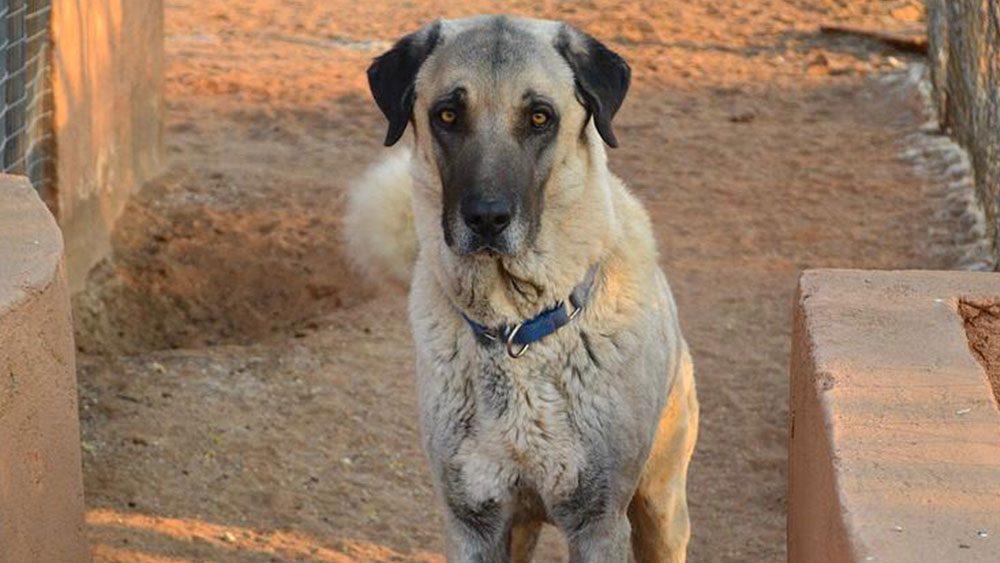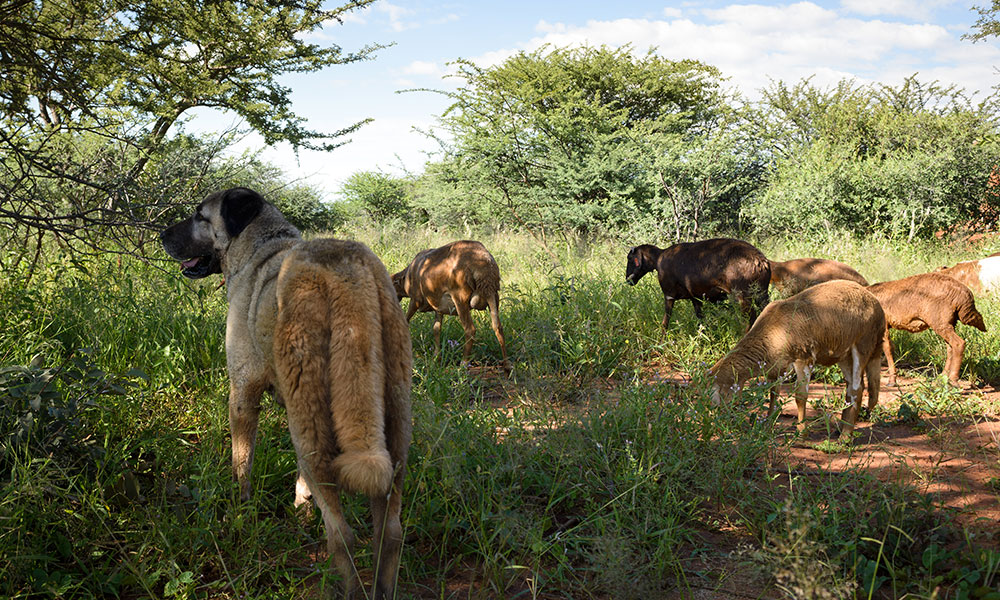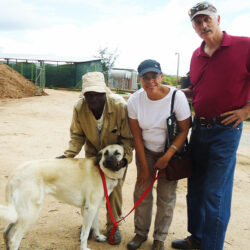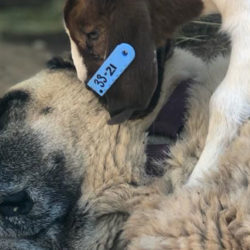On #National Dog Day – Stick Close To Your Lead Goat
-

- by Brandy Morenko Campbell August 26, 2019

For National Dog Day, we decided to featured a research paper from CCF’s Livestock Guarding Dog Program Manager, Calum O’Flaherty. For his graduate research at the University of Bristol, Calum followed CCF livestock guarding dogs for 6 months as they protected a herd of goats and sheep to get a better understanding of the variables that might affect how well they are able to provide protection against predators such as cheetahs. Protecting a herd from predators using livestock guarding dogs has been a practice used by herdsmen for centuries and has been particularly successful in preventing retaliatory killing of cheetahs that prey upon the livestock. Livestock are an essential source of income for farmers and crucial for maintaining local economic stability and consequently guard dog effectiveness is important in ensuring both the cheetah’s and farmer’s survival.
Guard dogs are presumed to be the most effective when they are closest to the herd they are protecting. For this reason, livestock guarding puppies are introduced at a very young age so that they learn to associate the herd as their own pack and subsequently remain close.
A guard dog’s day starts early and continues throughout entire day. So, work days are long and require dogs to working through the heat of the day while traveling through various types of landscapes. Calum was able to determine that guard dogs begin to stray further from their herds as the day progresses and as the temperatures rise. In addition, he found variability in the distance each individual dog maintains from the lead goat, likely due to either the amount of experience a dog has, the training they received, or individual dog personalities. He was also able to show that as vegetation density decreased, the dog surprisingly remained remained closer to the lead goat, presumably because the dog had easier access to his pack as the herd dispersed into more open habitats.

CCF researchers hope to use the information gathered to optimize peak guard dog performance and provide farmers with strategies that can ultimately ensure their livestock is protected to the best of a dog’s ability. As the use of guard dogs increases, guard dog training strategies, work-day scheduling, landscape considerations, and dog behavior are key factors that can be carefully considered and further investigated to continue to improve success rates using this cheetah saving method.
Visit our Resource Library for the full Masters Dissertation Manuscript by Calum O’Flaherty titled: Examining Proximity and Fine-Scale Movements to Assess Livestock.
Related Reading
-
October 3, 2022
Eulogy for Aleya – CCF’s Stubborn Sweetheart -
April 8, 2022
Puppy Delivery Journey with Gebhardt




